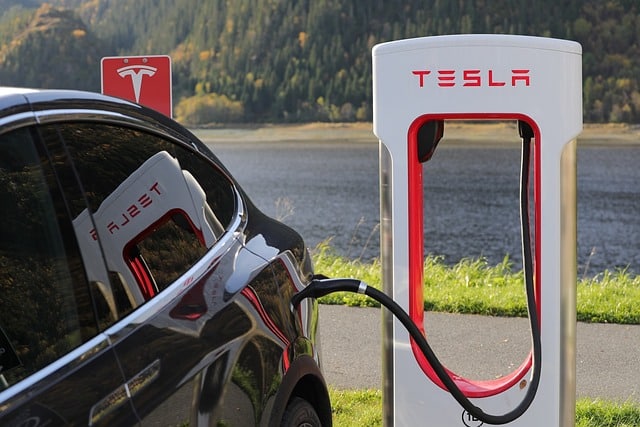EV Charging Stations
Electric vehicles (EV) are an essential part of owning an electric vehicle. All electric cars don’t have a gas tank; Instead of filling your car with gallons of gasoline, just plug your car into the charging station to refuel. The average electric car driver charges 80 percent of his car at home. Here’s your guide to the types of electric car charging points and the expected cost of charging your electric vehicle.
EV Charging Stations: Different type of charging stations for electric vehicles
Charging an electric car is a very simple process: just connect your electric car to a charger that is plugged connected with the power supply. However, not all electric vehicle charging stations are configured the same. Some can be installed by simply plugging them into any standard electrical outlet, while other charging systems require custom installation. The charging time for your car also depends on the charger used.
Electric vehicle chargers generally fall into one of three main categories: Level 1 chargers, Level 2 chargers, and DC fast chargers (also known as Level 3 chargers).
EV Charging Stations: Level 1 chargers
Level 1 chargers use a 120V AC plug and can be plugged into a standard electrical outlet. Unlike other chargers, Level 1 chargers do not require the installation of additional devices. These chargers generally offer a charging range of two to five miles per hour and are most often used in the home.
Level 1 chargers are the cheapest charging option, but they also take longer time to charge your car battery. Homeowners often use these types of chargers to charge their cars overnight.
EV Charging Stations: Level 2 chargers
Tier 2 chargers are used for residential and commercial charging stations. They use a 240V plug or 208V plug and, unlike Level 1 chargers, cannot be plugged into any standard outlet. Instead, they are usually installed by a professional. They can also be installed as part of a solar system. Level 2
Electric Car Chargers offer a range of 10 to 60 miles per hour of charge. They can fully charge an electric car battery in just two hours, making them an ideal choice for both owners who need a quick charge and businesses looking to offer charging points to their customers.
EV Charging Stations: Level 3 chargers
DC fast chargers, also known as Level 3 or CHAdeMO charging stations, give your electric car a range of 60-100 miles in just 20 minutes of charging time. However, they are typically only used in commercial and industrial applications; require powerful and highly specialized equipment for installation and maintenance.
Not all electric cars can be charged with DC fast chargers. Most plug-in hybrid electric vehicles do not have this charging feature and some fully electric vehicles cannot be charged with a DC fast charger.
EV Charging Stations: How do these stations work?
EV Charging Stations: Power management
With the increasing demand for electrical charging, companies looking to offer a variety of charging options to their customers must invest in equipment and software, quickly, before getting caught in the dust. With all the different charging levels and dozens of charging station manufacturers, it can seem overwhelming to catch up with consumer needs in just a few years. This is where EV Connect comes in.
EV Connect was developed to help residential buildings inspire their residents, to offer dispatchers a scalable solution for their taxi or bus fleets, or to provide shopping centres with convenient service for their customers. If the customer or customer needs troubleshooting or if something is still unclear how their EV charging stations work, EV Connect is available 24 hours to answer any questions.
EV Charging Stations: Included batteries:
Electric vehicle charging stations work by taking electricity from any one of several available sources and then distributing it to your electric vehicle. Depending on the make and model of an electric vehicle, there are some standard plugs and corresponding plugs and vehicle battery types, but in general, an electric vehicle uses the electrical energy stored in its fuel cells to power a motor that powers physically the wheels. – like those old Victorian vehicles.
Once the electric vehicle is full, the range depends on the specifications of your trip. More batteries can deliver more power, but they also generate more weight, which the motor has to overcome with additional power. Fewer batteries can result in lower curb weight and more efficient driving, albeit with a much shorter range and slower charge time, which can make longer trips difficult.

EV Charging Stations: Power structure:
EV technology has been around since the 1800s, and the basics of these first electric vehicles are not that different from what we have today. A rack of rechargeable fuel cells provided the power to rotate the wheels and propel the car forward and backward as needed, and many early electric cars could be charged from the same power outlets that powered certain lights and appliances in turn-of-the-century homes these days.
It can be difficult to imagine a battery-powered car at a time when horse-drawn carriages were the primary source of road transport, but the truth is that early automotive innovators experimented with all manner of power trains, from pedals and steam. even batteries and liquid fuels. In many ways, it seemed that electric cars had pole position in the race for mass production because they didn’t need massive water tanks and heating systems to generate steam, and they didn’t emit fumes or make noises like gasoline engines.





Trackbacks/Pingbacks